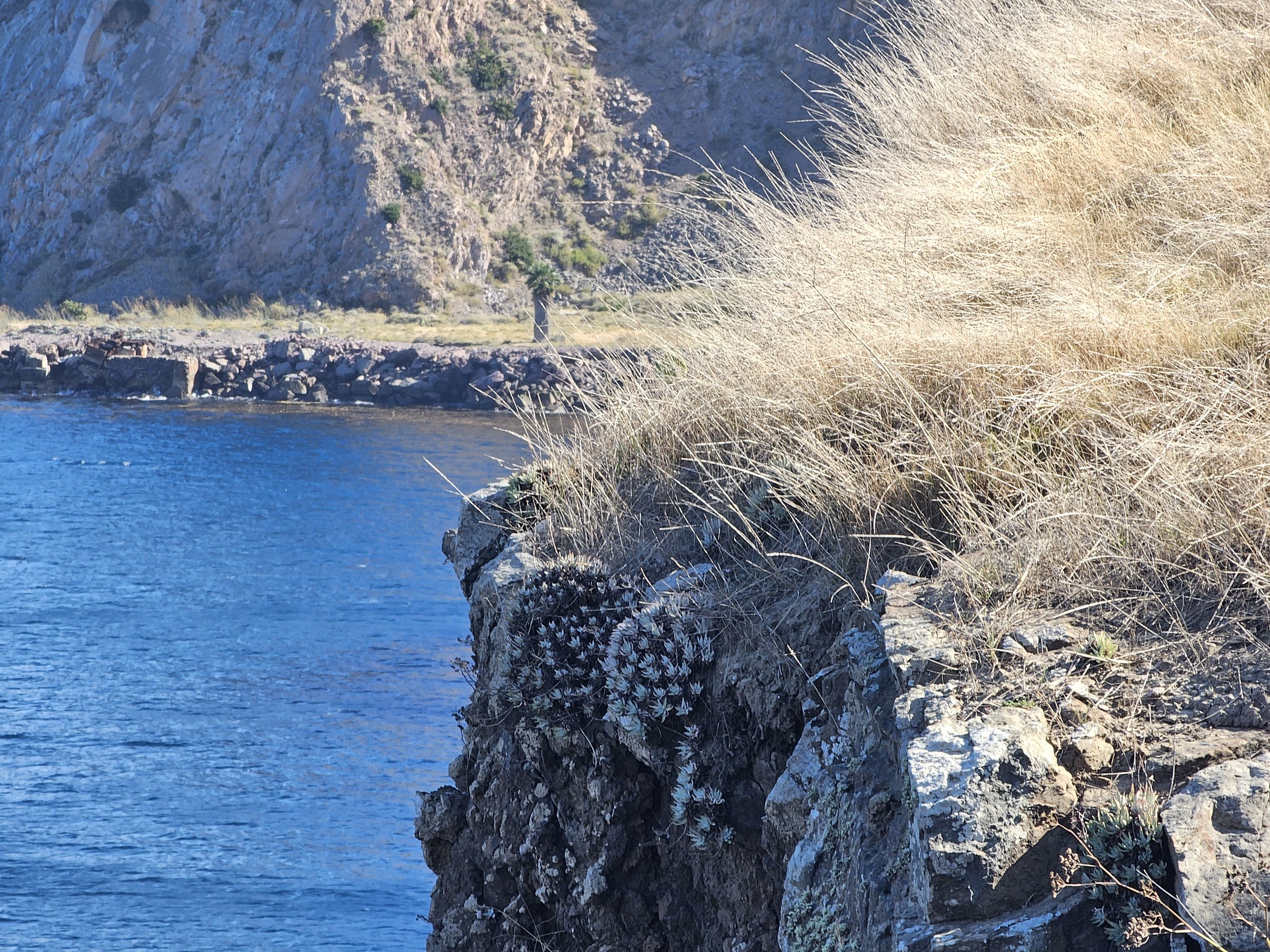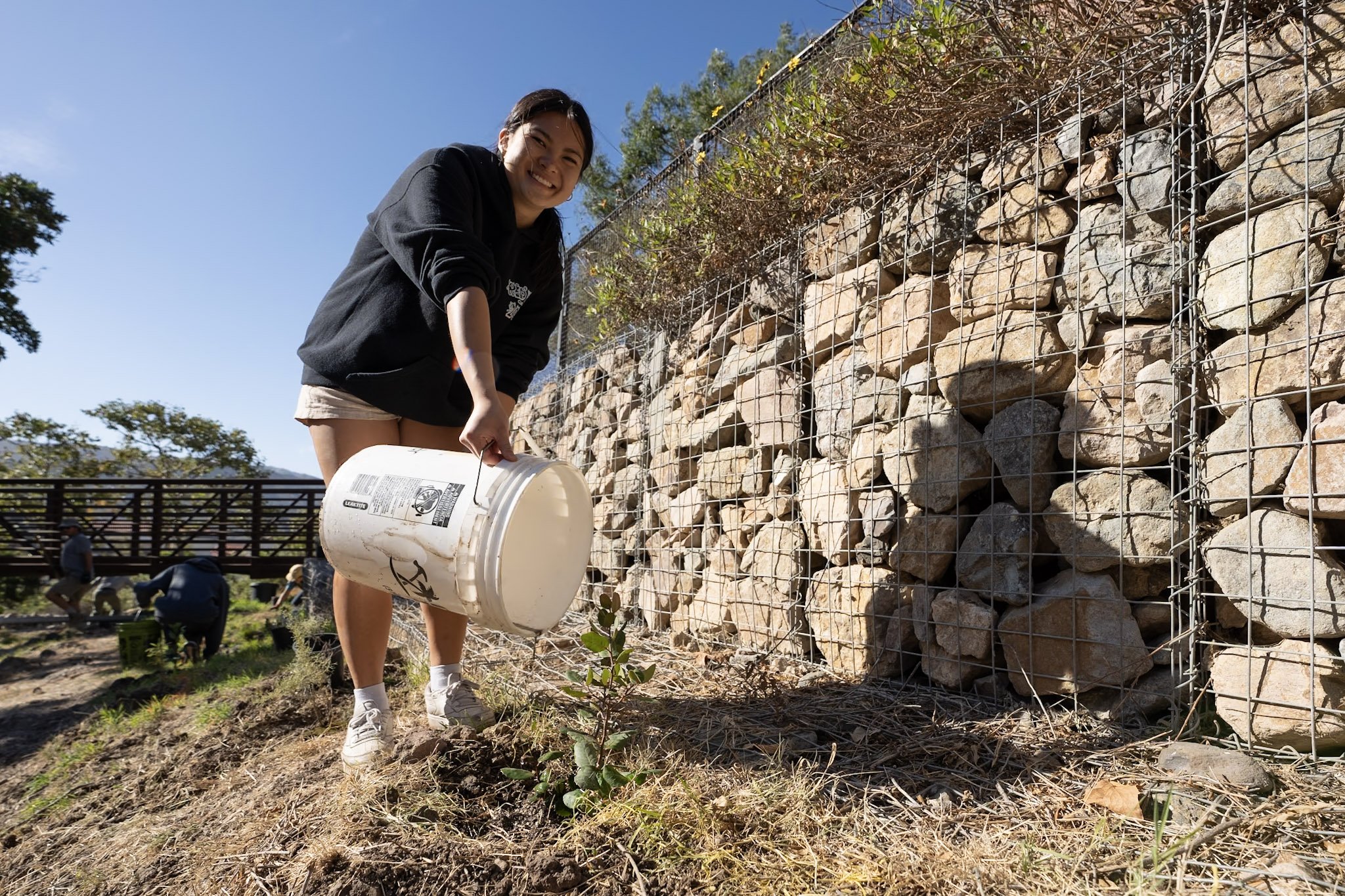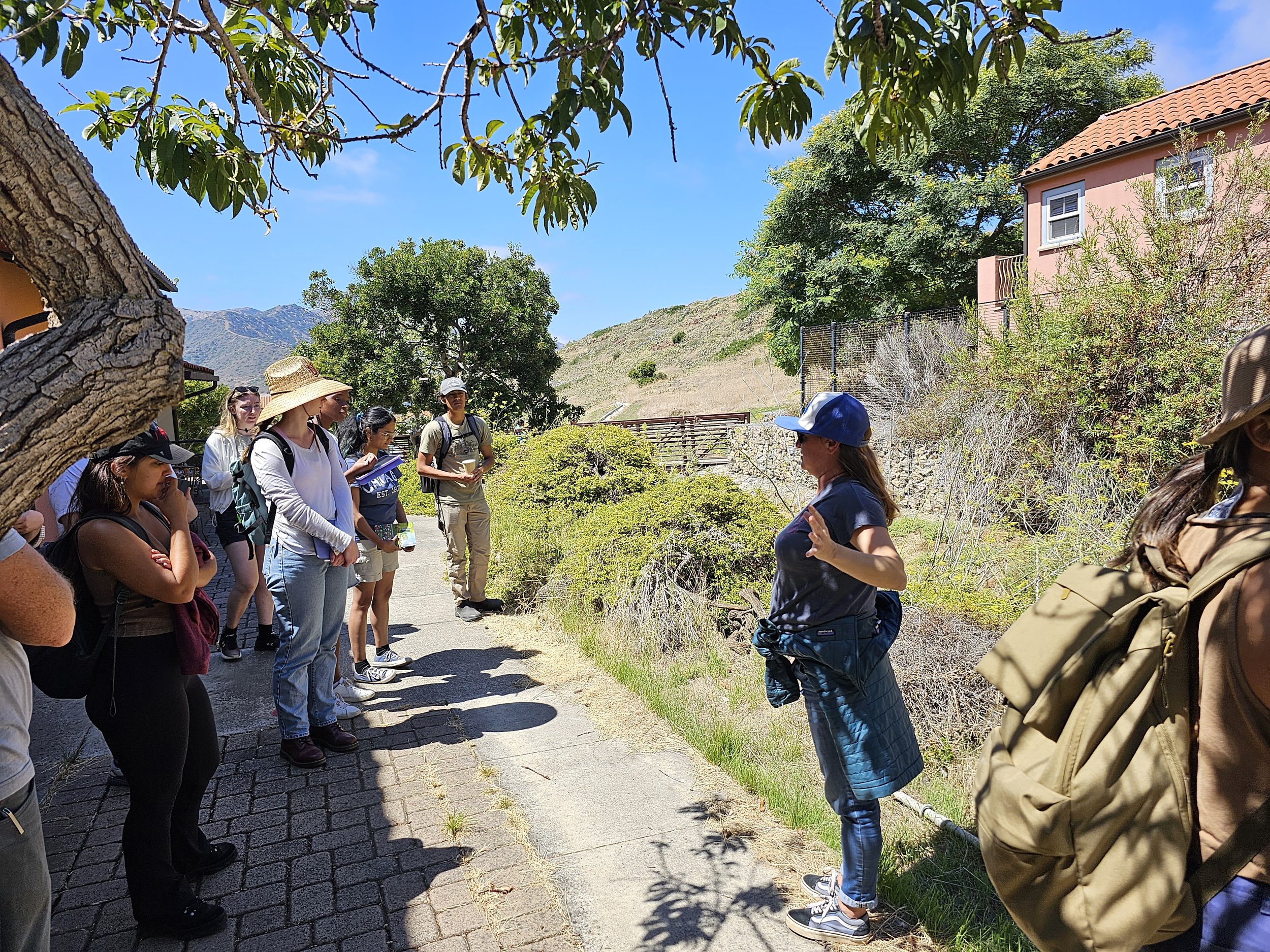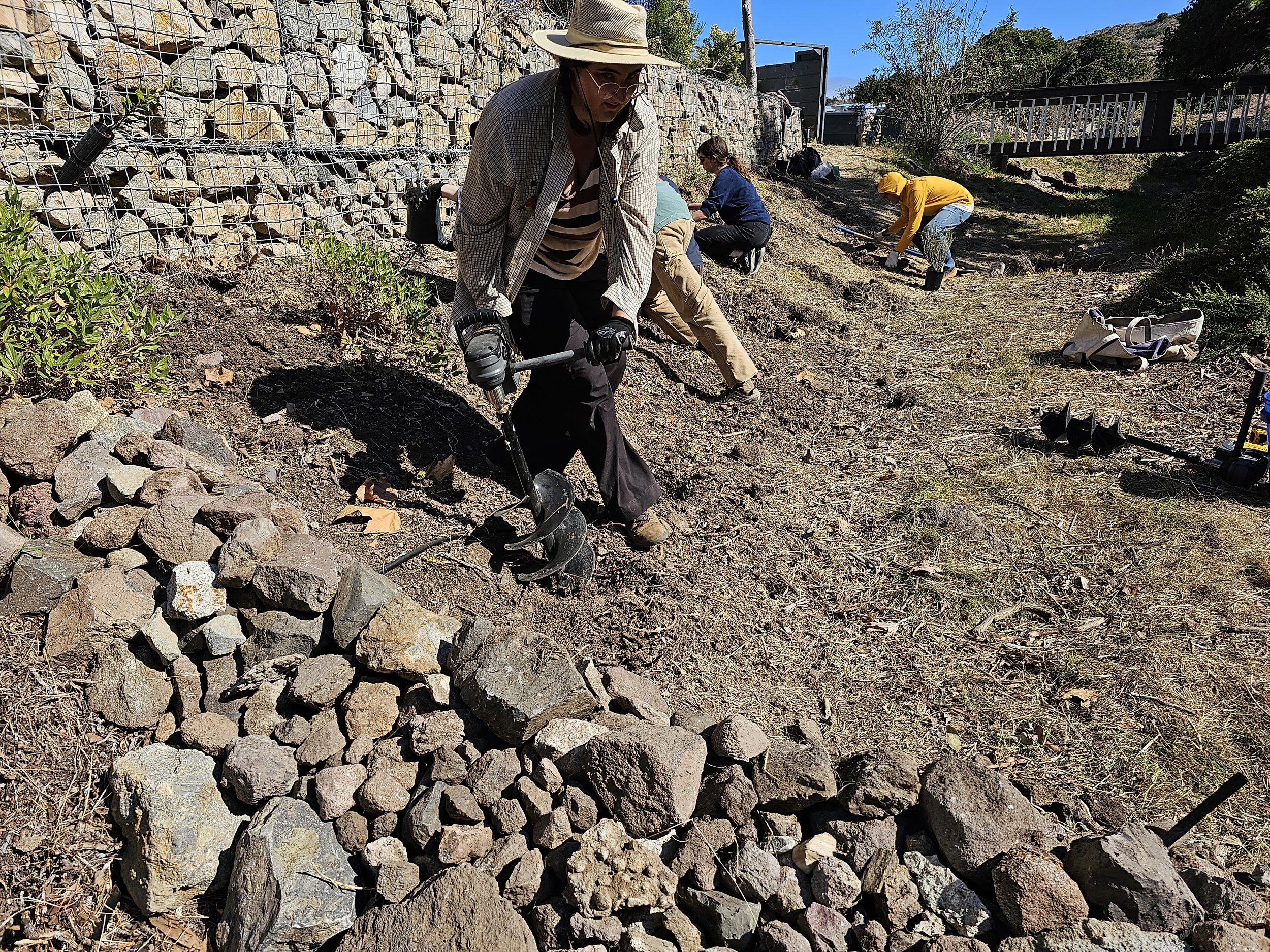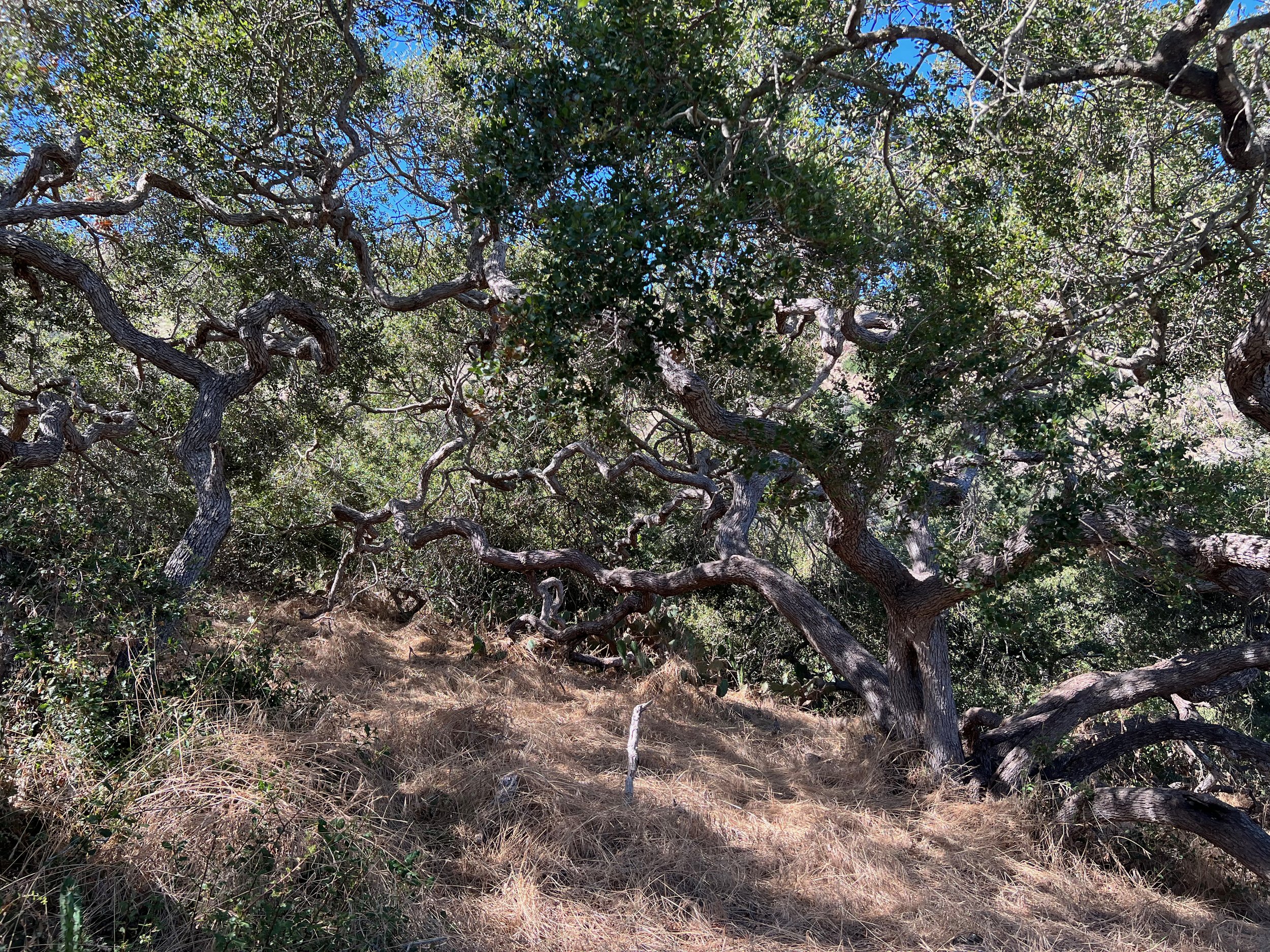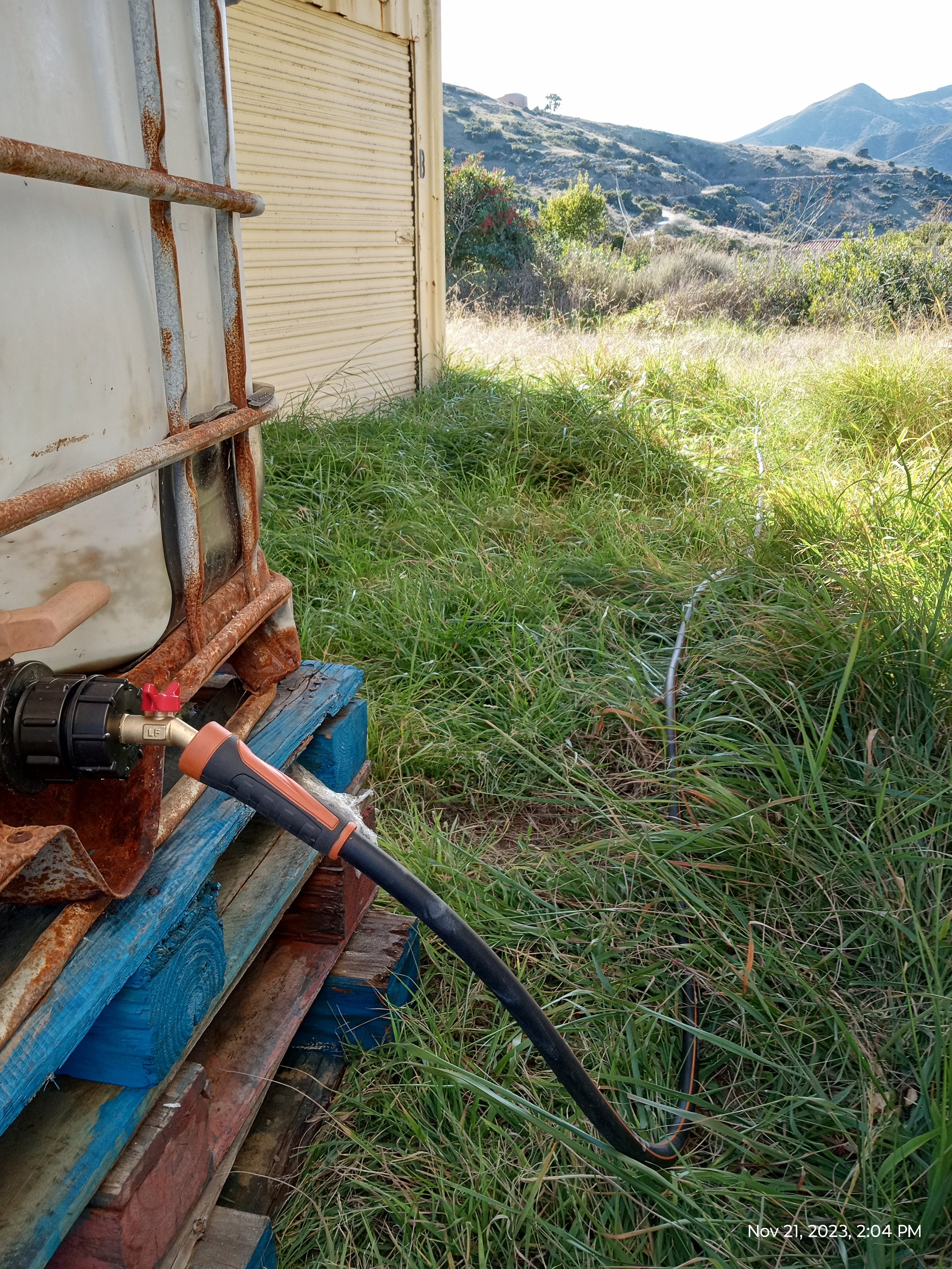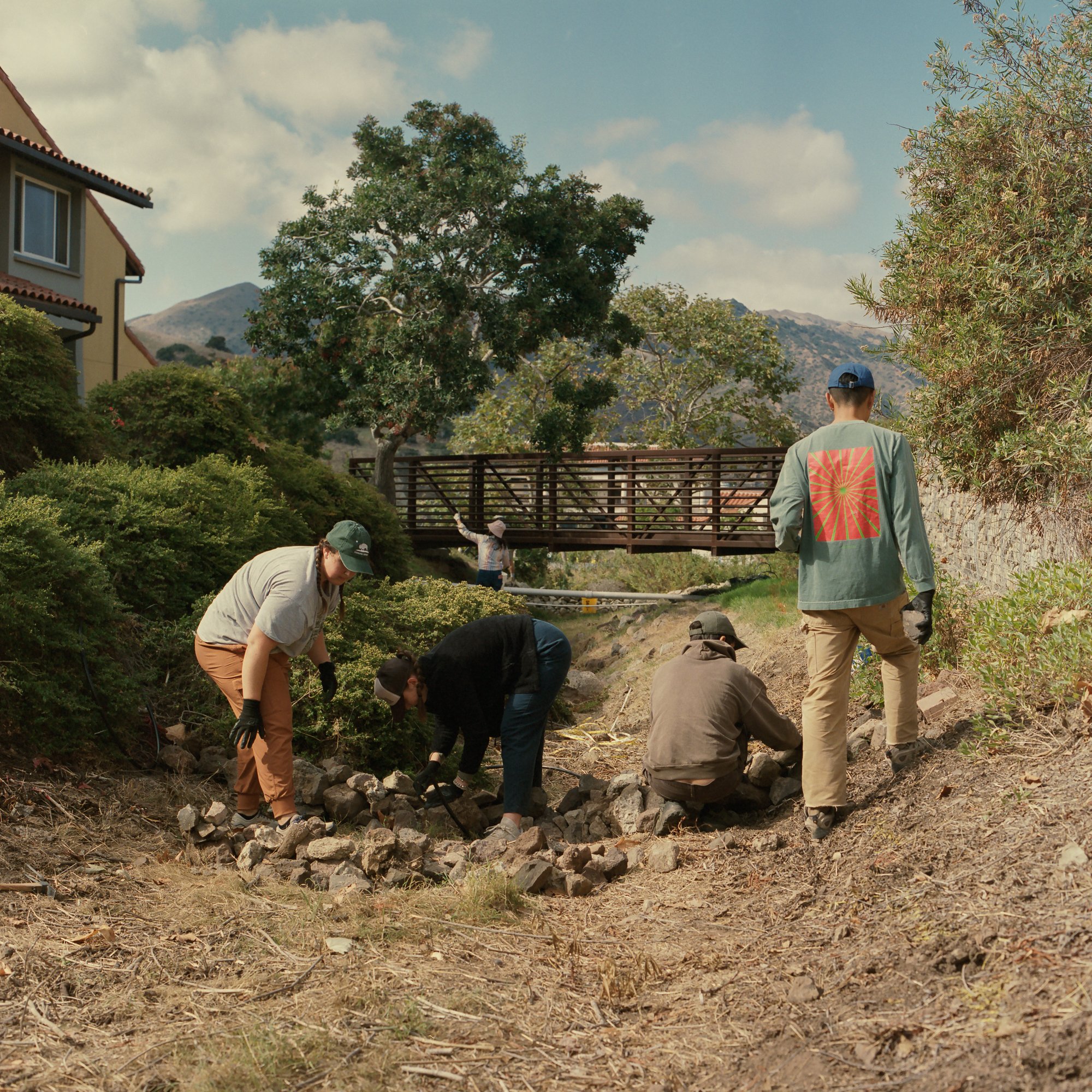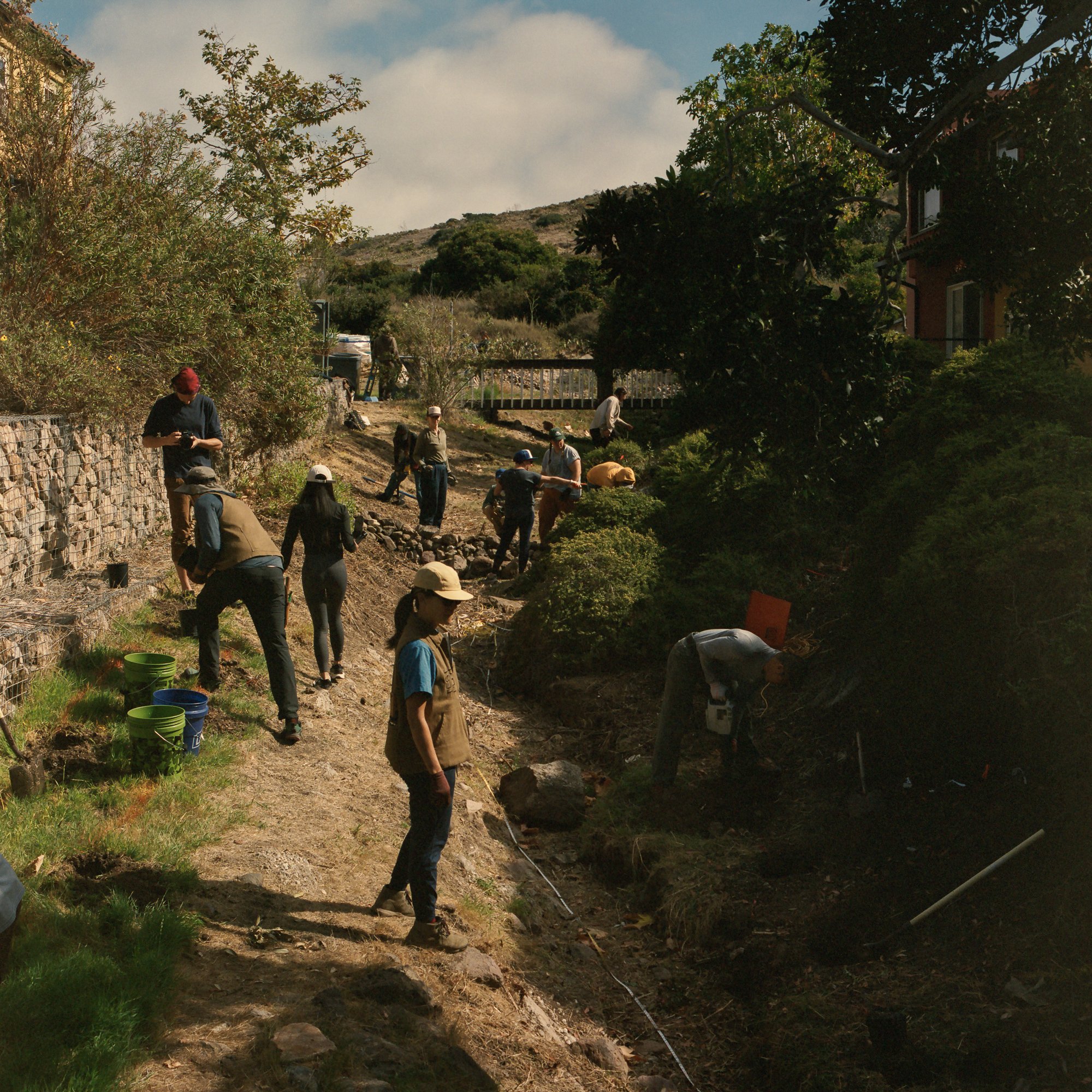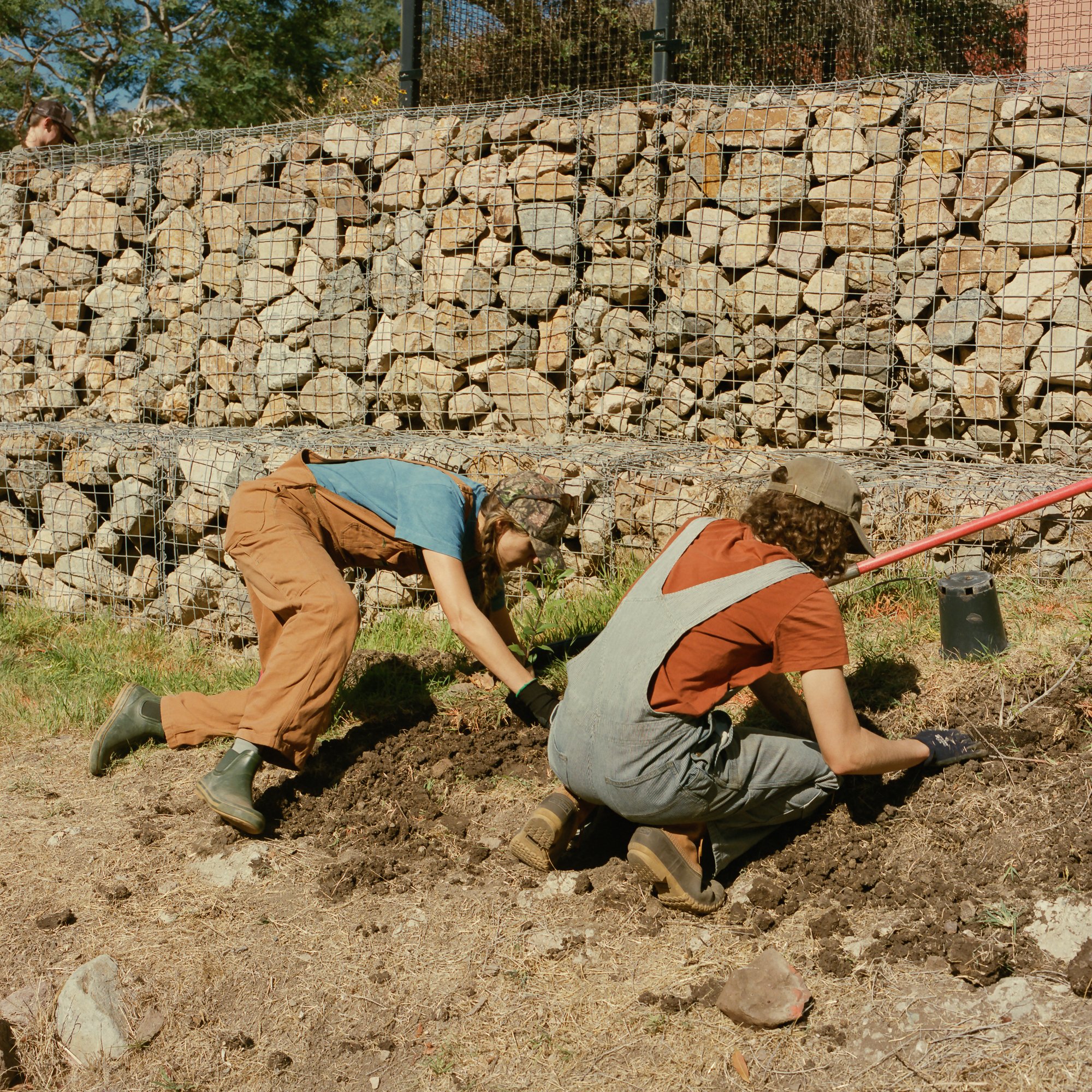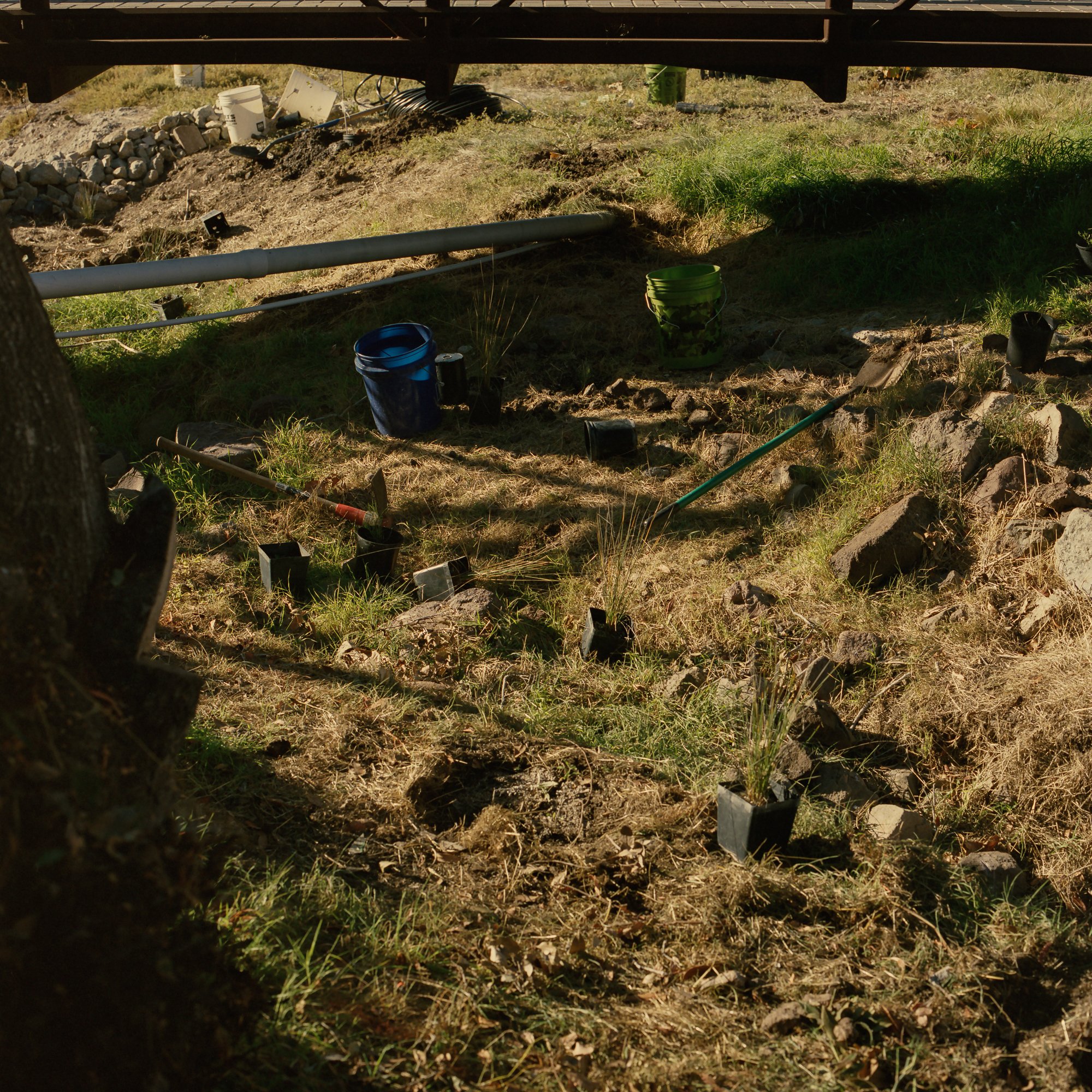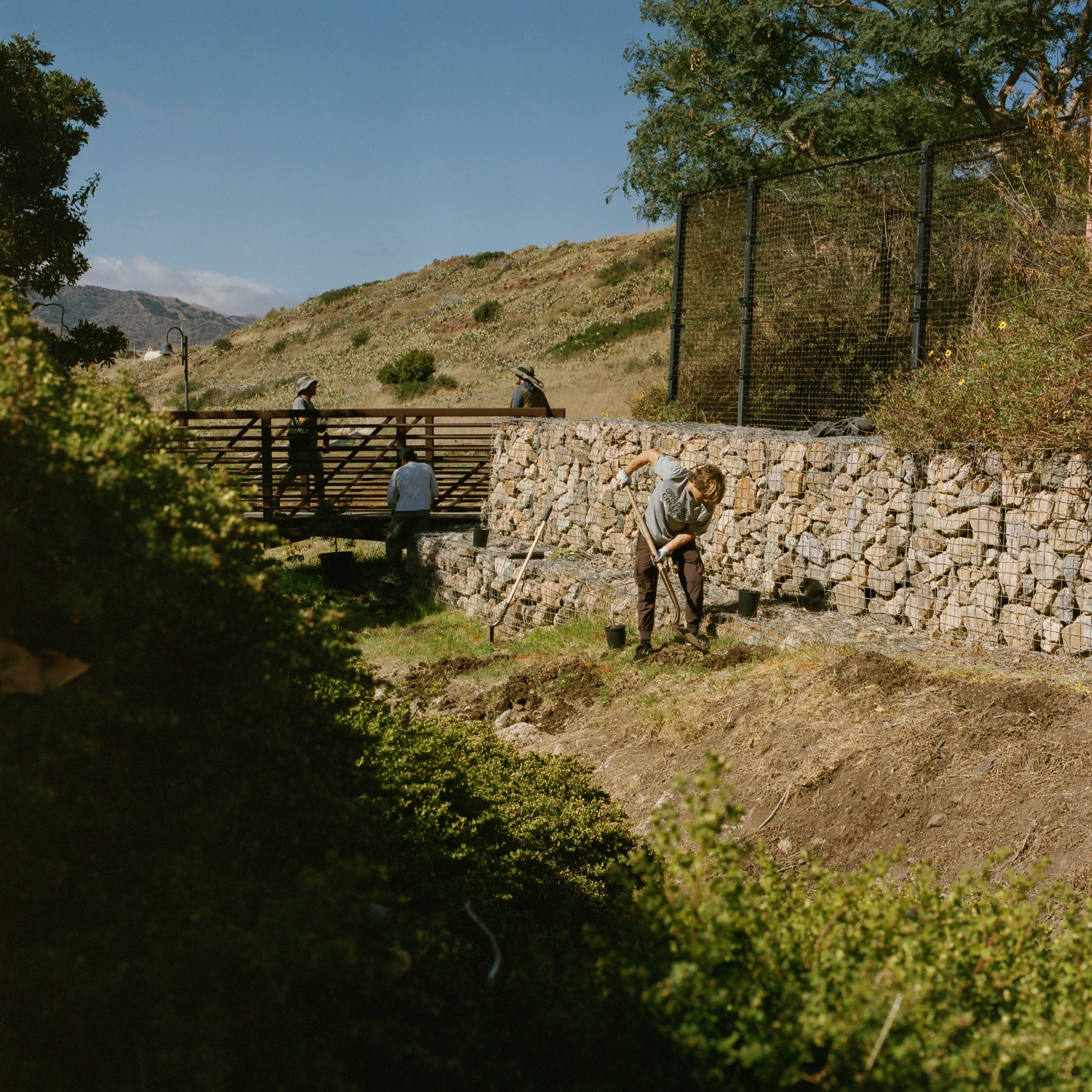Catalina Island Test Plot
Establishing a social and ecological garden in the Green Ravine
“Whichever island you choose to visit, somehow it is unexpected.”
—Elna Bakker, An Island Called California
“Small islands have often inspired dreams of total knowledge in those who love them.(…) All these people have been animated at first by the delusion of comprehensive totality, the belief that they might come to know their chosen place utterly because of its boundedness. And all had, after long acquaintances, at least understand that familiarity with a place will lead not to absolute knowledge but only ever to further enquiry.”
—Robert Macfarlane, The Old Ways: Journey on Foot
INTRODUCTION
A day’s sail off the coast of Los Angeles lies the island of Santa Catalina (or Pimu as its earlier inhabitants called it), the largest of the Channel Islands and the last remaining fragment of a tectonic plate, long subducted. On a spring day at Twin Harbors, the island’s isthmus, dozens of boats drift on their moorings below steep green slopes of grasses with scattered stands of trees. Backpackers wander through a palm tree lined resort built from the remnants of a 1935 film shoot mimicking a South Pacific location. A van carrying USC students bumps along a steep and rocky dirt road that winds up the slopes into the restricted areas of the island’s interior. Divers are out by the guano coated Bird Rock, exploring the giant kelp forest, where plump golden garibaldi fish patrol. Atop the rock a rare plant grows, protected from the island’s introduced deer population. In the afternoon, the winds shift and the rock’s potent stink drifts through the USC Wrigley Marine Science Campus, where the Test Plot is located. In the distance, a layer of marine haze obscures the mainland. It may take a few days to understand, but everything moves a bit slower out here and there is less of it, replaced by endless landscape and water.
ECOLOGY
Catalina Island’s watery isolation has made it a wild and irresistible ecological treasure while long challenging modern settlement. Even so, it has been seriously damaged by the incursions and interventions society has made, often to improve its touristic value. Introduced deer for hunters and leftover bison from a movie shoot have critically unbalanced a landscape co-evolved with animals no larger than a house-cat sized island fox. On an average year the island supports over one million visitors to its assortment of human venues and entertainments, which include the small touristy town of Avalon, many summer camps, and USC’s marine science field station. It is a staggering number for an island with a permanent population of around four thousand people.
Attempting to conserve the island’s ecological treasures amidst this onslaught is the mission of the Catalina Conservancy, a non-profit organization that was gifted 88% of the island’s land (about 66 square miles) by the current Wrigley family of owners. Their recent (2023) and controversial on-going effort to shoot all the deer using sharpshooters, a necessary step to protect the island’s threatened biodiversity, has reached national attention.
THE TEST
With this plot we intend to show how transitioning institutional landscapes to native plants becomes an opportunity to not only advance climate and ecological resilience, but build new partnerships and innovative models of private land stewardship and land conservation.
It is nearly impossible not to consider the island of Santa Catalina as a microcosm of the mainland, and by extension, a critical lesson and experiment for greater Southern California, or even the world. For at the same time Catalina Island preserves our ecological past, it faces our climate future more immediately, both by its human inhabitants and ecological riches. Our TEST PLOT proposes to demonstrate how the failed Catalina campus landscape of USC’s Wrigley Marine Science Center can become an opportunity to enact a resilient model of institutional landscape stewardship. To begin, the class spent weeks listening to stakeholders, coordinating with diverse partners, and designing a native planting in the institute’s Green Ravine. Then, with over thirty volunteers over three days, we planted 175 native plants in rock-hard soils and built rock check dams to harvest and clean water. The project has only just begun; it continues with new maintenance models, on-going advanced environmental monitoring, and expansion. In addition to revitalizing this landscape as an important ecological feature the project plans to share and implement this model of institutional land stewardship across Southern California.
PRESS
PLANT LIST
All grown by the Catalina Conservancy
Achillea millefolium
Anemopsis californica
Arctostaphylos catalinae
Artemisia californica
Artemisia douglasii
Asclepias fascicularis
Ceanothus arboreus
Clinopodium douglasii
Comarostaphylis diversifolia planifolia
Constancea nevinii
Crossossoma californicum
Datura wrightii
Diplacus aurantiacus
Dudleya virens insularis
Encelia california
Eriogonum giganteum giganteum
Eriogonum grande grand
Eriophyllum confertiflorum
Galvezia speciosa
Heteromeles arbutifolia
Holodiscus discolor
Isocoma menziesii menziesii
Juncus acutus
Lepechinia fragrans
Lyonothamnus floribundus floribundus
Malacothamnus fasciculatus var. catalinensis
Mimulus cardinalis
Prunus ilicifolia lyonii
Quercus pacifica
Ribes viburnifolium
Rhamnus pirifolia
Rosa californica
Rhus integrifolia
Salix exigua
Salix lasiolepis
Salvia apiana
Salvia mellifera
Sisyrinchum bellum
Solanum wallacei
Vitis girdiana
TIMELAPSE
Follow along and add your photos at the onsite Chronolog
LOG
TEAM
—Arch 546 Test Plot Class Fall 2023:
Alexander Robinson, Associate Professor, USC School of Architecture, Landscape Architecture + Urbanism Program
Students: Paige Buckner, Kavya Gudihal, Olivia Heffernan, Michele Heilman, Tiffany Mai, Muna Obiefule, Nicole Summerfield, Quinn Wilbert
PARTNERS
—USC Landscape Architecture + Urbanism Program
—USC School of Architecture
—USC Wrigley Institute for Environment and Sustainability
—USC Wrigley Marine Science Center
—USC Environmental Studies Program
—Catalina Island Conservancy
—Lauren Oudin, USC Wrigley Marine Science Center
—Cayman Lanzone, Catalina Island Conservancy
—Jen Toy, TEST PLOT, Adjunct USC School of Architecture
—Scott Applebaum, Andres Sanchez, USC Environmental Studies Program
—Jeremy Joo, USC TEST PLOT intern
—Conservation Corps of Long Beach
—PANDO DAYS '23!
YEAR
—November 2023 initial planting
MONITORING
—2023-2024: Jeremy Joo
PHOTO CREDITS
—Rio Asch Phoenix
—Nicholas Neumann/USC Wrigley Institute
